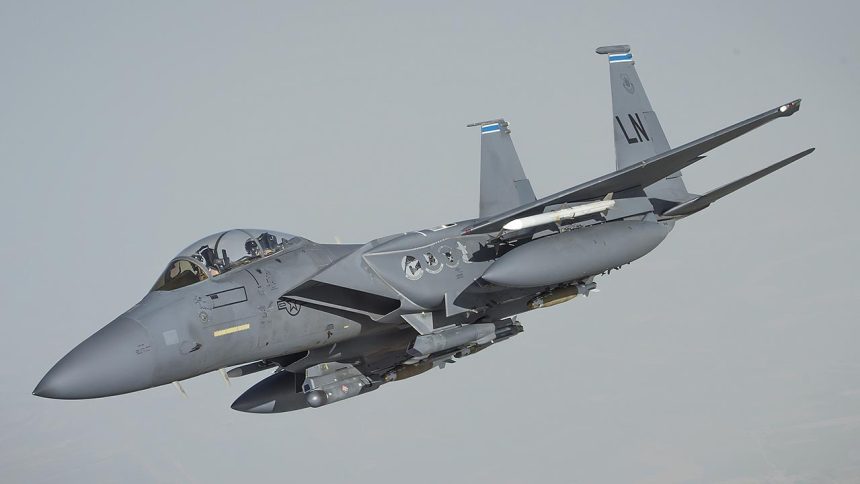In an effort to sustain and recapitalize the fighter fleet, the USAF is planning to return Lakenheath’s F-15Es to the U.S. once the two F-35 squadrons are fully operational.
In an unexpected change of plans, it appears that the U.S. Air Force is now planning to withdraw the F-15E Strike Eagle fighter jets based at RAF Lakenheath, in the UK, and return them to Continental U.S. (CONUS). The decision emerged during a hearing on the posture of the Department of the Air Force in review of the Defense Authorization Request for Fiscal Year 2026.
The decision
During the hearing, Senator Theodore P. Budd of North Carolina asked the U.S. Air Force Chief of Staff Gen. David W. Allvin about the plans which the service has been working on to sustain and recapitalize the fighter fleet. The F-35 is one of the key aircraft mentioned by the Air Force, and is now set to remain the only U.S. fighter type operational at the British base.
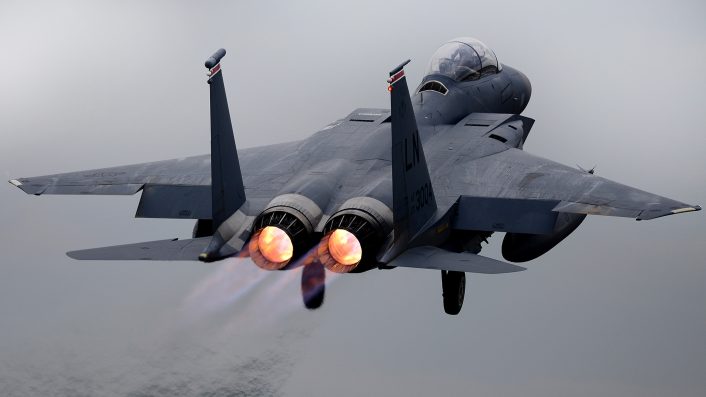
Before further proceeding, here is the transcription of the exchange between Sen. Budd and Gen. Allvin. You can find the original in the hearing’s recording from 2:20:00 onwards.
Budd: Last month we received the Air Force’s report to Congress which lays out the plan to sustain and recapitalize the fighter fleet. The plan goes out to 2035 and hinges on production and procurement assumptions over the next ten years, in order to work. In that sense, how important are the fighter production lines, and stable funding to those lines, in your effort to modernize the fleet?
Allvin: They are absolutely critical. The stable funding helps us not only to understand how to develop the pilot pipeline, but where they are going to be stationed, the whole thing, it’s critical.
Budd: One thing that stuck out to me was the arrival of the F-35s at Lakenheath air base and, once they are up and running, two Strike Eagle units will be returning stateside. Has the decision been made on where those aircraft will end up?
Allvin: The final decision has not been made, but when we are looking at the right place to have them land, those have the newer -229 engines in them, versus the -220 engines, Seymour Johnson has the 220s, we are looking very closely at the opportunity because Seymour Johnson is going to be critical to the F-15E and F-15EX community as far as the training unit and the operational unit for the E. So that certainly is an attractive landing spot, but we have not made a final decision.
Budd: Seymour Johnson hosts both combat and training missions and is home to the oldest Strike Eagles in the fleet. Does the return of those Lakenheaeth jets create flexibility for managing the F-15 fleet and keeping those missions alive?
Allvin: It absolutely does.
Budd: If you are able to divest those oldest jets, those -220 jets at Seymour Johnson, unincumbered by the current law, and replace them with newer ones, does that make it easier to sustain both the combat and the training missions at Seymour Johnson?
Allvin: It absolutely does.
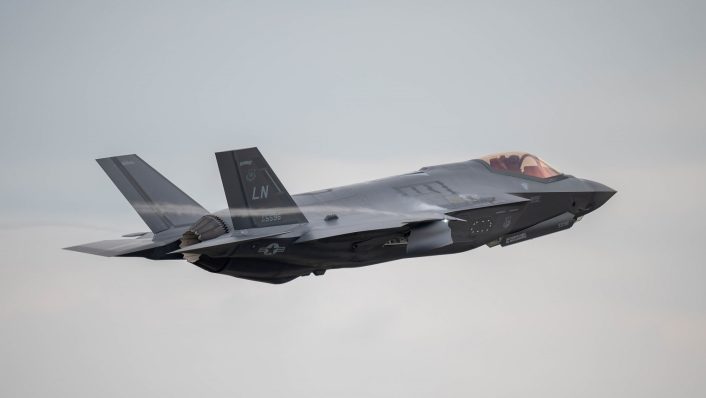
F-35 and F-15 at RAF Lakenheath
RAF Lakenheath, in Suffolk, UK, started receiving F-35s in 2021, when the first four aircraft arrived there on Dec. 15 to be assigned to the newly formed 495th Fighter Squadron “Valkyries.” In 2022, the 493rd Fighter Squadron “Grim Reapers” also received it first F-35s, after the transition from the F-15C Eagle.
On Apr. 3, 2025, U.S. Army Gen. Christopher G. Cavoli, commander of the U.S. European Command, delivered a written statement to the Senate Armed Services Committee providing an update about the deliveries. This was in the context of explaining the command’s and Allies’ need in the air domain for “a combination of standoff and survivable, distributed capabilities to identify, target, and engage attacking forces at the outset of conflict in a heavily contested environment.”
“USEUCOM established one F-35 squadron at Royal Air Force (RAF) Lakenheath in the United Kingdom, which is now fully operational,” said Gen. Cavoli. “A second squadron of F-35s will be complete this summer and will achieve full operational capability this fall. These two squadrons will replace fourth-generation aircraft currently stationed in Europe with more advanced fifth-generation capabilities.”
Air & Space Forces Magazine quoted Gen. James B. Hecker, commander of U.S. Air Forces in Europe and Africa, who previously mentioned that a total of 52 F-35As will be based at RAF Lakenheath. It is unclear which of the two squadrons has received all its aircraft, although it is likely to be the 495th FS, the first to receive the 5th gen aircraft.
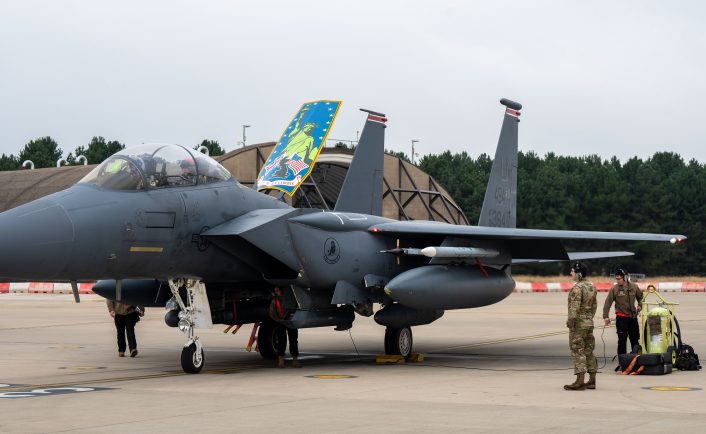
In order to host the F-35s, RAF Lakenheath underwent heavy modernization works. The initial plan was to continue hosting the two F-35 units, as well as the 492nd FS “Madhatters” and 494th FS “Panthers” which continue to operate about 50 F-15E Strike Eagles.
Notably, RAF Lakenheath received in January 2025 the first operational F-15Es retrofitted with the AN/ALQ-250 Eagle Passive/Active Warning and Survivability System (EPAWSS). As we mentioned at the time, the choice of Lakenheath as the first base to field the new EW suite perhaps reflects the importance placed upon it and its 48th Fighter Wing, which is regularly called upon to forward deploy aircraft further into Europe, as well as to the Middle East, earning its squadrons a remarkable combat record.
“Having EPAWSS operational at RAF Lakenheath significantly enhances our ability to detect and counter threats, ensuring the safety and effectiveness of our crews,” said Lt. Col. Timothy Causey, 494th FS commander, after the delivery of the first two upgraded jets. “This advanced electronic warfare system, when combined with the F-35s, acts as a powerful force multiplier, transforming our operations and amplifying the 48th Fighter Wing’s impact in the battlespace.”
As mentioned by Gen. Allvin, Lakenheath’s F-15Es are also among the newer ones and equipped with the more powerful F100-PW-229 engines, which provide 29,160 lbf (129.7 kN) of thrust instead of the 23,770 lbf (105.7 kN) provided by the older F100-PW-220. According to the reports, the U.S. Air Force has 218 Strike Eagles in inventory, of which 119 equipped with the -220 engines and 99 equipped with the -229 engines.
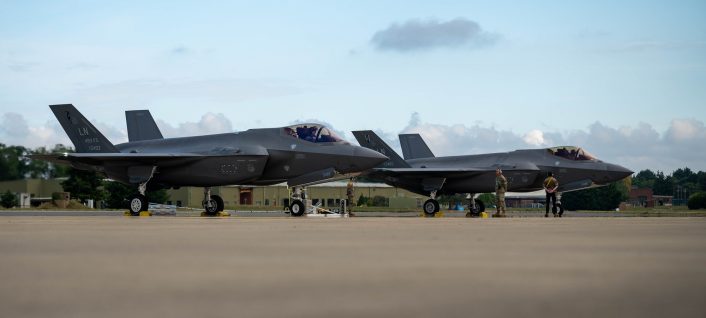
The service previously attempted to retire all of the 119 aircraft with the older engines to better manage the limited resources. These plans were later blocked by Congress with the National Defense Authorization Act (NDAA) for Fiscal Year 2024, which is possibly the law mentioned by Sen. Rudd and only allowed the retirement of individual jets determined to be “no longer mission capable and uneconomical to repair.”
Gen. Allvin did not provide a timeline for the return of the 48th FW’s F-15Es stateside. However, with both the F-35 squadrons becoming fully operational by the end of 2025, the withdrawal of the F-15E might start as early as next year, if the service decides to go ahead with the plan.

